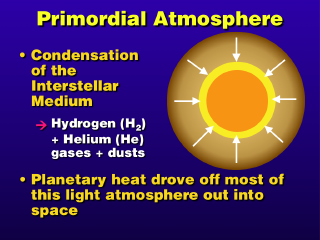 The universe is filled with Interstellar Matter, or consists of the Interstellar
Medium. The composition of this medium is hydrogen gas, helium gas, and various
dusts.
The universe is filled with Interstellar Matter, or consists of the Interstellar
Medium. The composition of this medium is hydrogen gas, helium gas, and various
dusts.
 The universe is filled with Interstellar Matter, or consists of the Interstellar
Medium. The composition of this medium is hydrogen gas, helium gas, and various
dusts.
The universe is filled with Interstellar Matter, or consists of the Interstellar
Medium. The composition of this medium is hydrogen gas, helium gas, and various
dusts.
The result of the condensation or contraction of the density anomalies in the Interstellar Medium is a collection of compressed clouds of dust and gases, forming primitive solar systems when the centers gain enough temperature and pressure to initiate the fusion reactions that occur within a star.
Within the protosun's dust disk, there are density anomalies that result in the condensation of protoplanets orbiting the sun. Just as solar systems formed from the instellar media of space, protoplanets condense in the cloud of dust and gas surrounding the protosun. Each protoplanet retains (for a time) an atmosphere consisting of the same interstellar material found in space, namely, hydrogen and helium. This was the primordial atmosphere.
The heat from the Earth, which was
still molten at this time (about 4.5 to 5 billion years ago), drove off the
light hydrogen and helium constituents of the early atmosphere out to space.
 The molten surface of the Earth about 4.5 to 4 billion years ago gave off
gasses (outgassing) that were to become the Earth's secondary atmosphere. We figure that the composition of these gasses were like the gases
from modern volcanic eruptions, since the sources were similar: water vapor
(85%), carbon dioxide (10-15%), nitrogen and sulfur dioxide (1-3%).
The molten surface of the Earth about 4.5 to 4 billion years ago gave off
gasses (outgassing) that were to become the Earth's secondary atmosphere. We figure that the composition of these gasses were like the gases
from modern volcanic eruptions, since the sources were similar: water vapor
(85%), carbon dioxide (10-15%), nitrogen and sulfur dioxide (1-3%).
As the Earth cooled and the surface solidified, the atmosphere cooled down and could no longer support the amount of water vapor that was put there by planetary outgassing. The excess water vapor condensed and rained out to form the Earth's oceans. Most of the carbon dioxide subsequently dissolved into thse oceans. What was left was the relatively little water vapor and carbon dioxide that we now observe in the present atmosphere.
It turned out that the formation
of the Earth's oceans was fortuituous for the formation of life. Strong ultraviolet
(UV) radiation from the sun was relatively unabsorbed by the oxygen-less atmosphere,
so this radiation tended to kill of any life that tried to form on the dry planetary
surface. The ocean water, on the other hand, did absorb this ultraviolet radiation, so
life was able to form underneath the surface of the oceans.